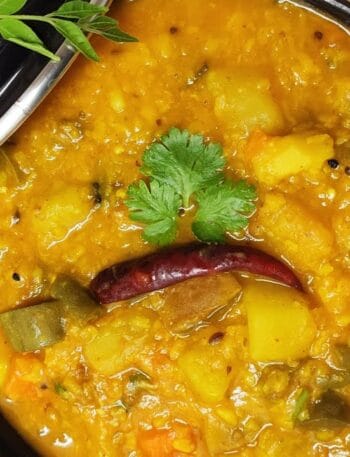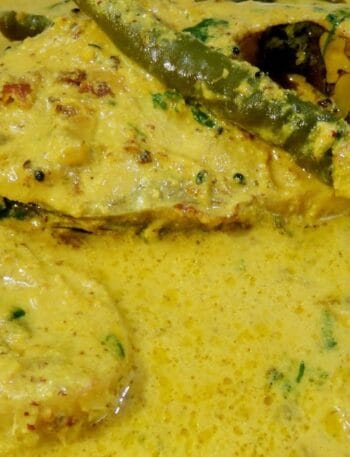Origin and Cultural Significance—
Long before modern superfoods made their way into our kitchens, Kolatha (କୋଳଥ) —known as Horsegram —quietly held its ground in Odisha’s countryside. Cherished in Ayurvedic medicine and rural folklore, it was more than a pulse; it was sustenance, medicine and a tradition of the bowl.
It is one of the oldest cultivated legumes in India. It dates back to traditionally growing it in upland and rain-fed areas because it required minimal water and could thrive in poor, dry soils, making it an ideal crop for Odisha’s tribal belt, western plains, and hilly regions like Koraput, Kalahandi, and Phulbani.
The humble Kolatha Dali(horsegram dal) has long been a staple for farmers and villagers during winters and post-harvest seasons when high-protein, warming foods were needed to nourish the body and build immunity. This dal is known for generating body heat and aiding digestion, which makes it a winter favourite in Odisha.
A Dish Steeped in Tradition & Community Bonding—
In traditional Odia households, Kolatha dal was often prepared:
- During the Paush and Magha Months (winter) for its warming properties.
- For people recovering from illness and childbirth.
- As a dietary aid for kidney stone prevention, digestion, and reducing body fat.
Ayurveda describes horsegram as ‘Kulatha’, known for its ability to dissolve kidney stones, regulate blood sugar, and reduce phlegm and body fat. It is also believed to aid in balancing Vata and Kapha dosha.
In coastal Odisha, it was a beloved pakhala side dish or served with plain rice and roasted vegetables. In temple offerings (especially in western Odisha), Kolatha dali was considered a simple, sattvik, and nutrient-dense dish offered to dieties on specific fasting days.
🥣 How to Make Kolatha Dali at Home—
Equipment Needed:
✔️Bowl – for soaking horsegram
✔️Pressure Cooker or Heavy-bottomed Pot – to boil the horsegram until soft
✔️Kadai / Frying Pan – for tempering spices
✔️Ladle (Karchi) – for stirring and serving
✔️Mixing Bowl (optional) – for mixing the cooked dal with tempering
✔️Measuring Spoons – to measure oil, turmeric, and spices
✔️Knife and Cutting Board – to chop ginger and curry leaves
✔️Small Grinder / Sil Batta (optional) – if you prefer freshly ground ginger paste instead of grated ginger
Ingredients:
🍲Kolatha (Horsegram) – 1 cup
🧂 Salt – to taste
✨ Turmeric Powder – ½ tsp
🛢️ Mustard Oil – 1½ tbsp
🌿 Panch Phutana (Five-Spice Mix) – ½ tsp
🌶️ Dry Red Chillies – 2
🍃 Fresh Curry Leaves – 8–10 leaves
🥄 Grated Ginger – 1 tsp
💧 Water – as needed
Optional Add-ons:
🌸 Ambula (Dried Mango) – 1-2 pieces (for tang)
🥥 Grated Coconut – 2 tbsp (for a slightly sweet finish)
Traditional Touch (Optional)
Clay Pot (Matir Handi) – Traditionally, Kolatha Dali was simmered in earthen pots for a smoky, earthy aroma.
Step-by-Step Cooking Instructions—
Soak and Boil the Horsegram:
- Rinse 1 cup of kolatha (horsegram) thoroughly and soak it in lukewarm water for 4-5 hours or overnight for faster cooking.
- Pressure cook with 2½ cups of water, turmeric, and salt for 4-5 whistles, or boil in a heavy pot until soft.
Prepare the Tempering (Chaunk the dali):
- Heat mustard oil in a kadhai or pan till it reaches its smoking point. Then reduce the heat to medium.
- Add some Panch Phutana (½ tsp and let it splutter.
- Add dry red chillies (2-3), fresh curry leaves (8-10 leaves) and grated ginger. Sauté until aromatic. (Be careful curry leaves will splutter in hot oil)
Combine and Simmer:
- Pour the cooked horsegram/kolatha into the tempering and stir well.
- Add an ambula if using for a tangy flavour
- Adjust water for desired consistency (thick or soupy)
- Simmer on low heat for 5-7 minutes, allowing flavours to blend beautifully.
Garnish and Serve:
- (optional)- Stir in fresh grated coconut just before serving for a mild, nutty finish.
- Serve hot with steamed rice, roasted vegetables, roti
Best Ways to Enjoy Kolatha Dali—
🌾 Traditional Pairings:
✔️Steamed rice (arua bhata) – The most common and comforting way to enjoy Kolatha Dal.
✔️Roti/Chapati – Soft Indian flatbreads pair well with the earthy flavour of the dal.
✔️Paratha – Especially plain or ajwain parathas to complement the simplicity of the dal.
✔️Pickle (Achar) – A tangy or spicy pickle enhances the overall flavour.
✔️Fried Papad – Adds a crunchy texture to the meal.
✔️Stir-fried Veggies – Like okra, pumpkin, or ridge gourd (seasonal sabzi) for a wholesome platter.
🍹 Beverage Pairings:
✔️Buttermilk (Mattha / Chaas) – Light, cooling, and aids digestion.
✔️Spiced Lassi – Yogurt-based drink that complements the mild spicing of the dal.
✔️Plain Lassi – For a slightly sweet contrast to the savoury meal.
✔️Herbal Tea – Especially tulsi or ginger tea, to sip post-meal.
✔️Coconut Water – Naturally cooling, especially if the meal is enjoyed during warmer seasons.
🍮 Sugary Delights to Wrap Up:
✔️Chhena Poda – Odisha’s iconic baked cheese dessert with caramelised edges.
✔️Rasgulla – Soft, spongy balls of chhena soaked in sugar syrup; light and refreshing.
✔️Coconut Ladoo – Simple yet delicious; made from grated coconut and jaggery or sugar.
✔️Kheeri (Odia Rice Pudding) – Made with rice, milk, sugar, and cardamom, often with cashews and raisins.
✔️Poda Pitha – A slow-cooked rice cake traditionally made during festivals, can round off a rustic meal beautifully.
Storage & Leftover Tips—
Refrigeration:
- Allow the dal to cool to room temperature before transferring it to an airtight container. Store it in the refrigerator for up to 3-4 days.
Freezing:
- If you want to store the dal for a longer period, you can freeze it. Place the cooled dal in a freezer-safe container or a zip-top freezer bag. Label the container with the date and store it in the freezer for up to 3 months.
Thawing and Reheating:
- To thaw frozen Kolatha Dal, transfer it to the refrigerator and let it thaw overnight. Reheat the dal on the stovetop over medium heat, stirring occasionally, until heated through. You may need to add a little water to adjust the consistency.
Microwaving:
- Alternatively, you can microwave the frozen dal in a microwave-safe dish, covered, stirring occasionally, until heated through.
Safety:
- Always ensure that the dal is heated to piping hot before serving, especially if it has been frozen and thawed, to kill any bacteria that may have developed during storage.
Health Benefits of Kolatha Dal—
- Rich in Protein: Horse gram is an excellent source of plant-based protein, making it a great choice for vegetarians and vegans looking to meet their protein needs.
- High in Fibre: The high fibre content in horse gram helps in promoting digestive health, preventing constipation, and regulating blood sugar levels.
- Iron Content: Horse gram is a good source of iron, which is essential for the production of red blood cells and for preventing anemia.
- Low Glycemic Index: It has a low glycemic index, which means it releases sugar into the bloodstream slowly, making it suitable for diabetics when consumed in moderation.
- Antioxidant Properties: Horse gram contains antioxidants that help in fighting free radicals and reducing oxidative stress in the body.
- Anti-inflammatory: It has anti-inflammatory properties, which may help in reducing inflammation and related conditions.
- Weight Management: The high fibre and protein content in horse gram can help promote satiety and reduce overall calorie intake, which may aid in weight management.
- Heart Health: The fibre, potassium, and magnesium in horse gram are beneficial for heart health, as they help in lowering cholesterol levels and regulating blood pressure.
A Dish That Embodies Odisha’s Culinary Soul— 🌿
Kolatha Dal (Horse Gram Dal) is more than just a flavorful dish — it’s a powerhouse of nutrition and a symbol of Odisha’s traditional wisdom. Packed with protein, fiber, iron, and essential minerals, it serves as a valuable addition to a healthy, balanced diet.
Its regular inclusion in meals can support better digestion, regulate blood sugar, prevent iron deficiency, and promote heart health. Thanks to its low glycemic index and high fiber content, it’s especially beneficial for those managing diabetes or aiming for weight control.
Beyond its nutritional benefits, Kolatha Dal carries cultural significance, especially among Odisha’s tribal communities, where it has been a staple for generations. Its simplicity, versatility, and deep-rooted heritage make it a beloved dish that reflects the region’s connection to seasonal, mindful eating.
All in all, Kolatha Dal is not just food—it’s nourishment, culture, and comfort in a bowl.
So why not bring a taste of tradition to your table and experience the wholesome charm of Odisha’s culinary heritage?




